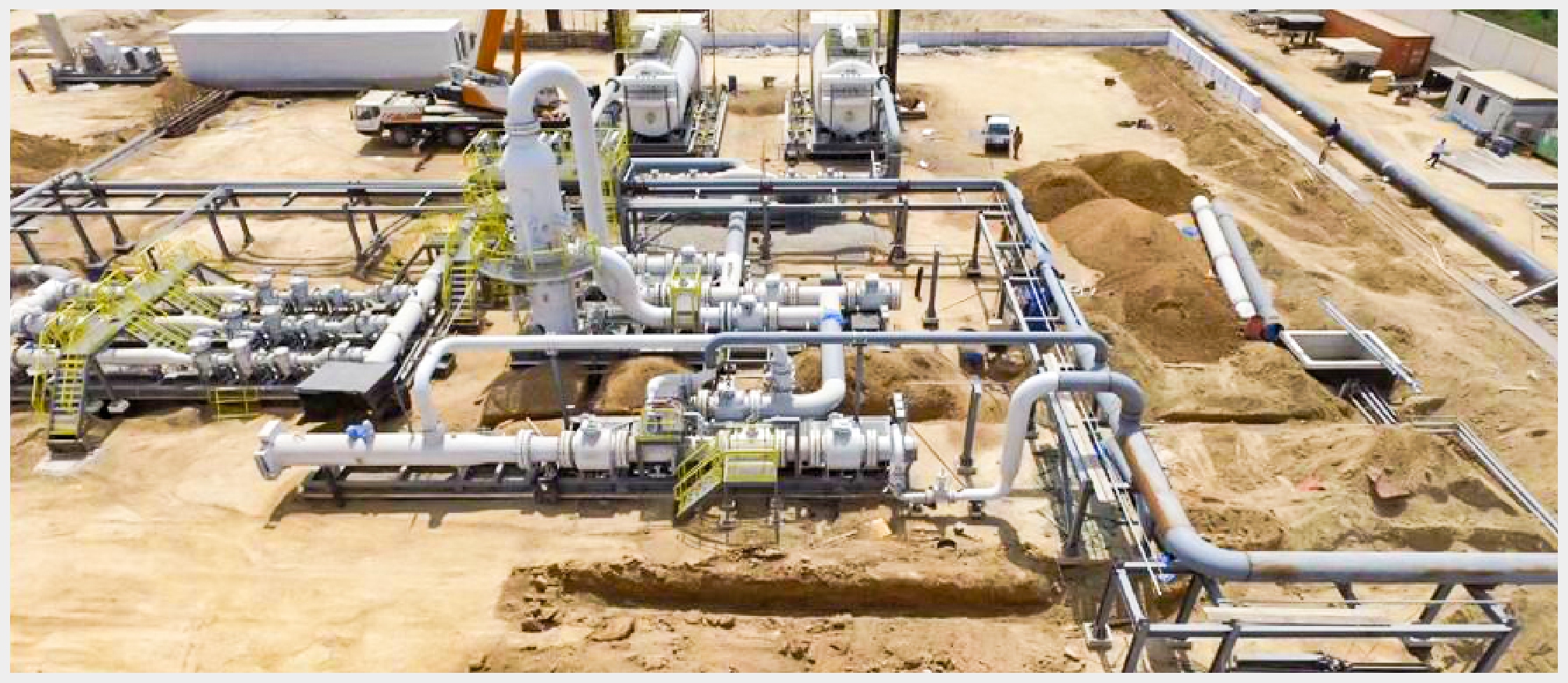Liquefied natural gas (LNG) is natural gas, predominantly methane, that has been cooled down to liquid form for ease and safety of storage and transport. It takes up about 1/600th the volume of natural gas in the gaseous state.
We provide Natural Gas Liquefaction Plants in micro (mini)and small scale. The capacity of the plants covers from 13 to more than 200 Tons/day of LNG production (20,000 to 300,000 Nm3/d).
LNG terminal is an organic whole composed of many relevant equipment assemblies. Through the cooperation of these equipment, the LNG transported by sea can be stored in LNG storage tank and exported to users through certain process flow. These equipment include unloading arm, storage tank, low-pressure transfer pump, high-pressure transfer pump, carburetor, bog compressor, Flare Tower, etc.
Unloading arm
As the name suggests, the unloading arm is the mechanical arm that transfers LNG from the offshore transport ship to the storage tank through the corresponding pipeline. It is the first step for the LNG terminal to receive LNG. The difficulties to be overcome are low temperature cold insulation and omni-directional rotation without leakage. In addition to the unloading arm, the terminal shall also install a gas-phase return arm to prevent the risk of negative pressure in the tank of the transport ship during unloading.
Storage tank
Storage tank is the place where LNG is stored, and the selection shall be considered from the comprehensive factors such as safety, investment, operation cost and environmental protection. LNG storage tank is a large storage tank with atmospheric pressure and low temperature. The structural forms of storage tanks include single containment tank, double containment tank, full containment tank and membrane tank.
Low pressure transfer pump
Its function is to extract LNG from the storage tank and send it to the downstream device. It is an important equipment in the transportation system.
High pressure transfer pump
The function is to directly enter the LNG from the Recondenser into the LNG high-pressure transfer pump and deliver it to the carburetor after pressurization.
Carburetor
Its function is to vaporize liquid natural gas into gaseous natural gas, which is sent to the gas transmission pipe network after pressure regulation, odorization and metering. Generally, seawater is used as the vaporization medium.
Bog compressor
It is used for pressurization and gas transmission, that is, part of the evaporated gas generated in the storage tank is boosted by the compressor and enters the Recondenser for condensation, and then sent to the carburetor together with the exported LNG through the high-pressure export pump.
Flare Tower
The function of Flare Tower is to burn waste gas and adjust the pressure in the tank at the same time.
- Previous: 1~5×104NM3/D MINI LNG LIQUEFACTION
- Next: Customized 2~10×104m3 / D natural gas liquefaction plant
Post time: Apr-18-2022



